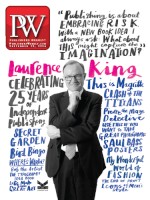A dignified older man in a suit tries to make sense of his life in a home for senior citizens as he struggles to hold on to his memories. That’s the haunting premise for Wrinkles (Arrugas) by Paco Roca, a graphic novel just published in the U.S. by Fantagraphics. When it appeared in its native Spain in 2007, Wrinkles started a revolution in Spanish graphic novel publishing, winning the Spanish National Comics prize in 2008 and virtually every other Spanish comics award, and selling 50,000 copies. It was even adapted into an animated film.
It was just the start of a recent boom in Spanish graphic novel publishing, with production surging, and more and more Spanish cartoonists finding an international readership. According to statistics from Tebeosfera, a Spanish comics website, the number of comics published in Spain grew to 2,905 in 2015, up from 2,470 in 2012.
Though there have been many notable Spanish comics makers in the past—Blacksad, by Juan Diaz Canales and Juanjo Guarnido, an elegant noir series starring an anthropomorphic cat hero, is an international bestseller, and artists David Aja (Hawkeye) and Marcos Martin (Private Eye) have gained acclaim in the mainstream U.S. comics market—the development of Spain’s own comics culture has been relatively recent.
Previously, most of the comics published in Spain were imported from the U.S. and France, and put out by large publishers such as Planeta, Panini, and Norma, with a few homegrown titles. However, that’s all been changing as the worldwide comics culture grows, and Spanish indie publishers such as Astberri and La Cúpola have brought over such esteemed U.S. authors as Chris Ware and Daniel Clowes, as well as helping develop native authors such as Roca.
According to David Macho, an agent and translator who works with many Spanish artists in mainstream U.S. comics, the revolution began about a decade ago with a boom in fanzines, followed by “a big explosion of new professionals finding a home at publishers like Astiberri, Norma, Dibbuks, or ECC,” he said. “All the new talents want to leave their mark and the ‘indie’ graphic novel market isn’t indie anymore. It keeps growing and growing, and it’s more solid by the day.”
The latest generation of Spanish cartoonists is getting a showcase this month with a U.S. author tour sponsored by the Spain Arts and Culture organization. The delegation includes author Santiago García, and artists Ana Galvañ, David Rubín, Javier Olivares, and José Domingo. They were all set to appear at the Small Press Expo (September 17–18) in Bethesda, Md., to promote Spanish Fever, an anthology of Spanish indie comics being published in English by Fantagraphics. Besides Wrinkles and Spanish Fever, Fantagraphics’ list includes two books from Argentina: Lucas Varela’s wordless SF extravaganza, The Longest Day of the Future, and Growing Up in Public by Ezequiel Garcia, a searing look at artistic life in Buenos Aires.
Latin-American cartoonists are also getting a U.S. readership. Last year Fantagraphics published a gorgeous U.S. hardcover edition of The Eternaut by writer Héctor Germán Oesterheld and artist Francisco Solano López. Originally published in the ’50s, the book is an important literary classic in its native Argentina, although its then-explosive political message forced López to flee to Spain. The U.S. edition sold out of its first printing and was nominated for three Eisner Awards, winning Best Archival Collection/Project—Strips. A second printing just came out.
Perhaps the best-known Latin-American cartoonist in the U.S. is the Argentinean Riccardo “Liniers” Siri. Enchanted Lion has published three volumes of his wildly popular comic strip Macanudo—a fourth is due later this year—and he also works with Toon Books, Francoise Mouly’s children’s graphic novel house. Liniers has seen a similar growth in indie cartoonists in Argentina. “It’s an amazing art form, and Latin Americans love amazing art forms,” he said.
However, throughout Latin America there is often a problem getting access to independent comics from the U.S., as Spanish publishers often control the rights and the books don’t always make it to Latin America. To solve this, Liniers and his wife, Angie Erhart Del Campo, formed La Editorial Común, a small company that publishes Latin-American cartoonists such as Power Paola (Virus Tropical, published in the U.S. by 2dcloud) and international cartoonists including Guy Delisle and Dash Shaw. Though its lineup is small—five or six books a year—the demand is there, Liniers says, and he expects the reputation of Latin-American cartoonists to grow internationally. “Just as with the boom in literary authors like Garcia Marquez in the ’80s, it will happen with comics at some point.”
Though its line of Spanish speaking authors wasn’t a deliberate publishing strategy—“We just publish the best cartoonists from around the world that we find,” said Fantagraphics publisher Gary Groth—Fantagraphics has more books coming from this vibrant market. Next year Fantagraphics will publish a U.S. edition of Las Meninas by Javier Olivares and Santiago García (both part of the aforementioned author tour), a book about artist Diego Valazquez that won Spain’s National Comic Award last year. “It’s a strong story and the artwork is sensational,” Groth says.



 Volume 263
Issue 38
09/19/2016
Volume 263
Issue 38
09/19/2016





